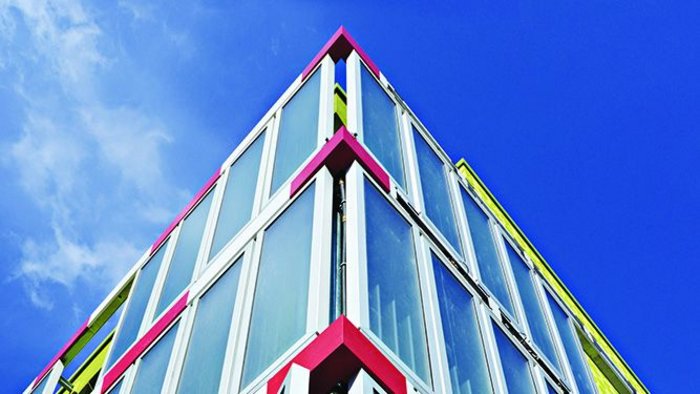High performance carbon fibre stone could cut four gigatons of carbon a year from production while significantly outperforming steel and reinforced concrete
A carbon fibre-based ‘super-material’ that’s lighter than aluminium and able to structurally outperform steel and reinforced concrete could also remove billions of tons of CO2 from the atmosphere by using algae during its production, researchers claim.
The innovative material is the result of a project by Technical University of Munich (TUM), backed by a EUR6.5 million grant from the German government, to advance the development of manufacturing processes for polymers and carbon-based lightweight construction materials using algae.
Carbon fibre stone (CFS) comprises thin sheets of granite covered and layered with carbon fibre fabric to boost compressive strength. The technology has been in development for about 12 years, but the more recent integration of microalgae in the production of the carbon fibre, instead of polluting fossil oil, has dramatically lifted environmental performance.
Microalgae grow extremely fast when cultivated and can actively store greenhouse gas CO2 in form of biomass. When algae sugars in the biomass are processed to produce yeast oil, this is treated to produce glycerine as a key ingredient in the manufacture of carbon fibres.
According to Kolja Kuse at Techno Carbon Technologies, the manufacturing partner for CFS, large scale algae cultivation for the material could make it possible to remove about four gigatons of CO2 from the atmosphere per year, a ‘climate significant’ impact.
The ability to sustainably scale up carbon fibre production has huge implications for construction, he explains: ‘If we can transform carbon fibre into a sustainable and scalable material we can replace cement and steel at a large scale. Using algae is feasible cost-wise, the speed of algal growth and production capacity is much greater than any other natural resource or source of energy.”
Granite is normally fragile when exposed to tensile forces, but when it is coated with carbon fibre fabric, its stiffness increases to ensure it is always under compression. In lab tests, samples were shown to exceed the mechanical performance of steel and steel-reinforced concrete, adds Kuse.
A prototype house wall built from CFS, with 20mm-thick inner and outer layers, was able to withstand a 150 ton load before breaking in tests. ‘A concrete wall would require a 200mm thick element with four times the weight to get the same performance,’ says Kuse. Other components that have been produced include a carbon fibre reinforced granite double T beam and a flat plate.
Some types of granite have a lower specific weight even than aluminium, making it possible to halve the weight of structure compared to steel or steel reinforced concrete.
The researchers have proposed that microalgae is farmed in vast tanks located on land not needed for agriculture. However, the requirement for consistently high levels of sunlight for cultivation would limit opportunities in Western Europe and may require a shift of material manufacturing bases to locations further south such as arid or semi-arid areas of Spain, Morocco or Algeria.
The most suitable microalgae thrives in saltwater – which is a major bonus for scalability – so tanks would likely need to be located close to coastal areas.
With the structural performance of CFS and algae production now proven, researchers will spend the next three years further refining the overall process, and testing and refining properties such as fire performance.
‘We have shown there is the potential to get rid of the most CO2 intensive and environmentally unfriendly mass building materials used today,’ says Kuse. ‘And while there are some question marks, such as the need to move to southern areas to produce building materials in the future, it shows there are possibilities to get out of the CO2 trap.’
